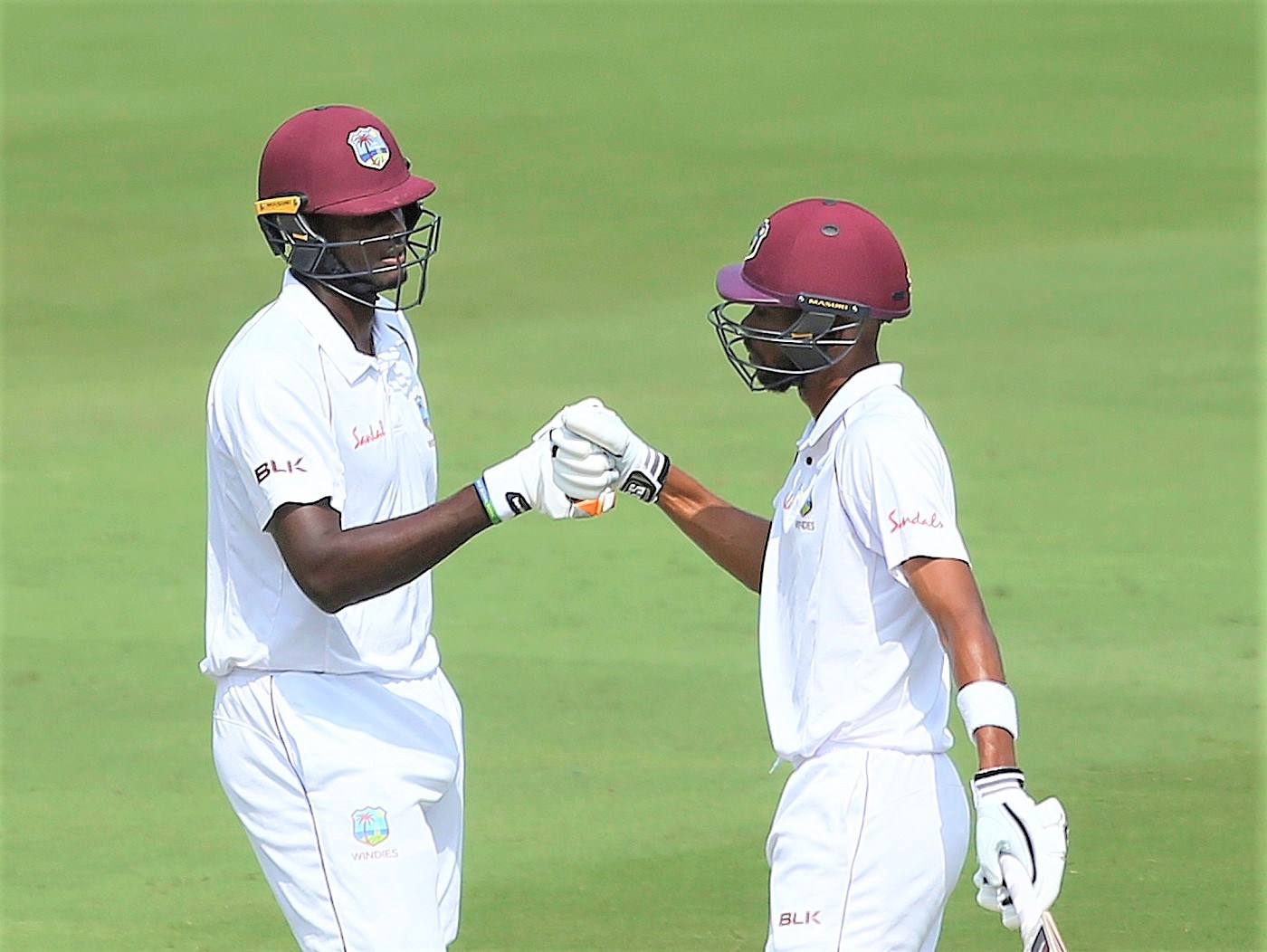
For the first time in two tours of India, West Indies finally made India take the second new ball. Well into their third innings of this series, West Indies finally found a method to bat. Not surprisingly Roston Chase, who helped them save a Test against India in the West Indies, led the way, with the returning captain Jason Holder making the second-biggest contribution. The two added 104 for the seventh wicket to take West Indies to 295 for 7 at stumps, their first score of 250 in four Tests in India, all played in good batting conditions.
Chase and Holder – and briefly Shai Hope and Shane Dowrich – showed faith in their defence, which showed they finally batted normally: keep the good balls out, look to alternate strike and punish the bad balls. Before that, batsmen unsure of their defence, unable to read Kuldeep Yadav out of his hand, batted in a much more predetermined way: either ultra-aggressive or ultra-defensive irrespective of the kind of bowling. A simple contrast showed in how they took 84 singles in this innings as against 73 in both the innings put together in Rajkot. Only 30 of Chase’s unbeaten 98 runs came in boundaries.
It didn’t start that well for them. Well, for a brief while it did. Holder was back, the toss was won, Umesh Yadav was loose, debutant Shardul Thakur hobbled off with a groin injury, and West Indies were off to a flier. However, Kieran Powell, Shimron Hetmyer and Sunil Ambris failed to make use of good batting conditions. They were up against a good bowling attack, but they didn’t make them bowl enough good balls.
Powell attacked almost everything eventually getting beaten in the flight and still going through with an aerial shot against Ashwin, who bowled a tight spell of 10.2 overs with the new ball for just seven runs.
That control gave Kuldeep Yadav the freedom to go through his bag of tricks. When you are not picking his wrong ‘un and the other bowler is not giving away anything, you don’t stand much chance against a wristspinner with variations. – Cricinfo




